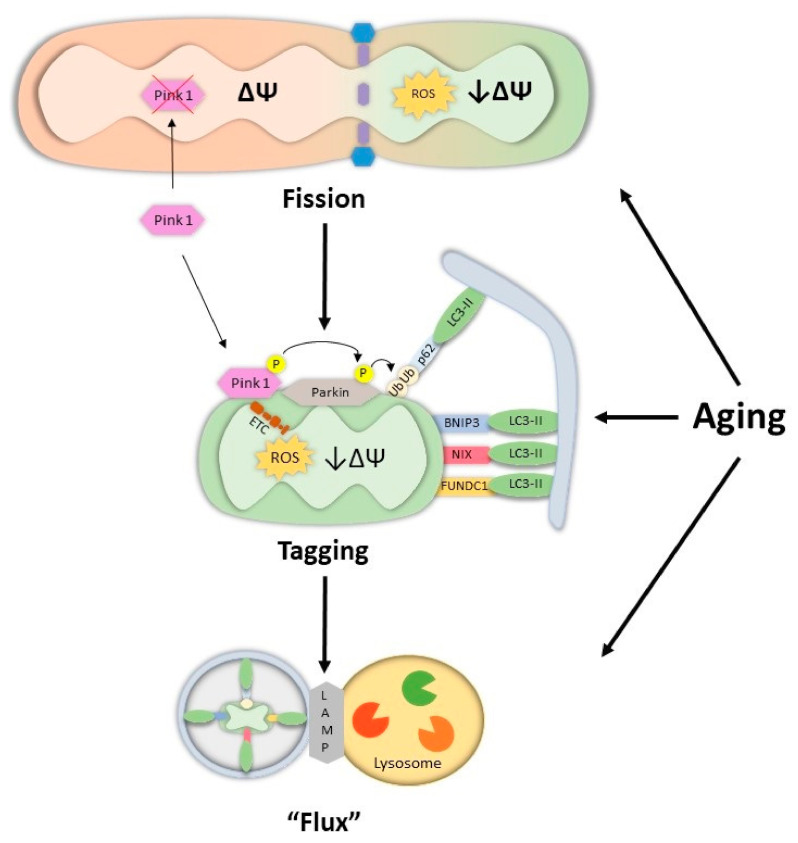Figure 2.
The impact of age on mitophagy in skeletal muscle. When a portion of the mitochondrial reticulum becomes dysfunctional, with a low membrane potential (Ψ) and elevated ROS production, it will undergo fission, mediated by Drp1 and Fis1, depicted as green mitochondria. The fragmented mitochondrion will enter the mitophagy pathway. Pink1, which is normally imported and degraded in the mitochondria, will accumulate on the outer mitochondrial membrane (OMM), and will ultimately recruit and activate the E3-Ligase Parkin. Parkin subsequently poly-ubiquitinates OMM proteins which bind to adapt proteins such as p62. p62 will tether autophagosomal proteins, such as LC3-II. In Ub-independent mitophagy, receptors such as BNIP3, NIX and FUNDC1, found on the OMM, will anchor the mitochondria directly to autophagosomal proteins. Ultimately the autophagosome-bound mitochondria will be shuttled to lysosomes where they will be degraded. Aging muscle exhibits increased mitochondrial fission, autophagy tagging, and flux, to the point of the lysosomes. Evidence, somewhat limited, exists that point to lysosomal dysfunction with age.

